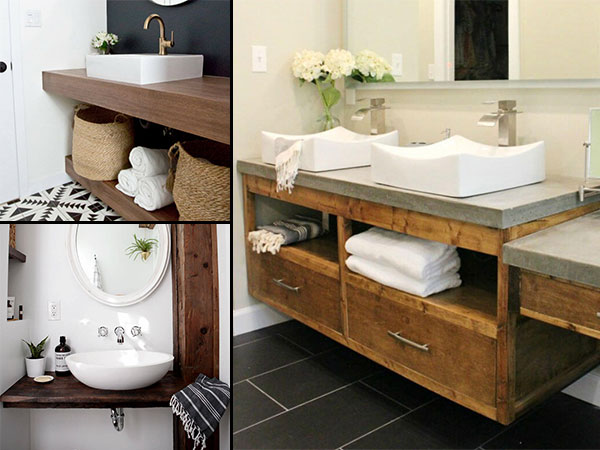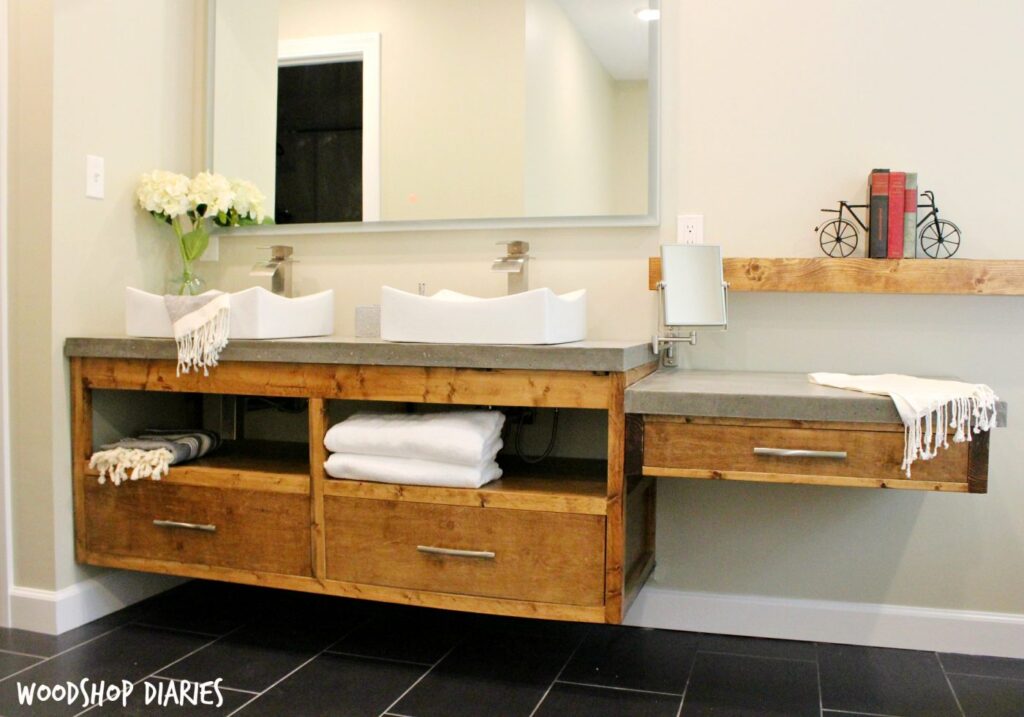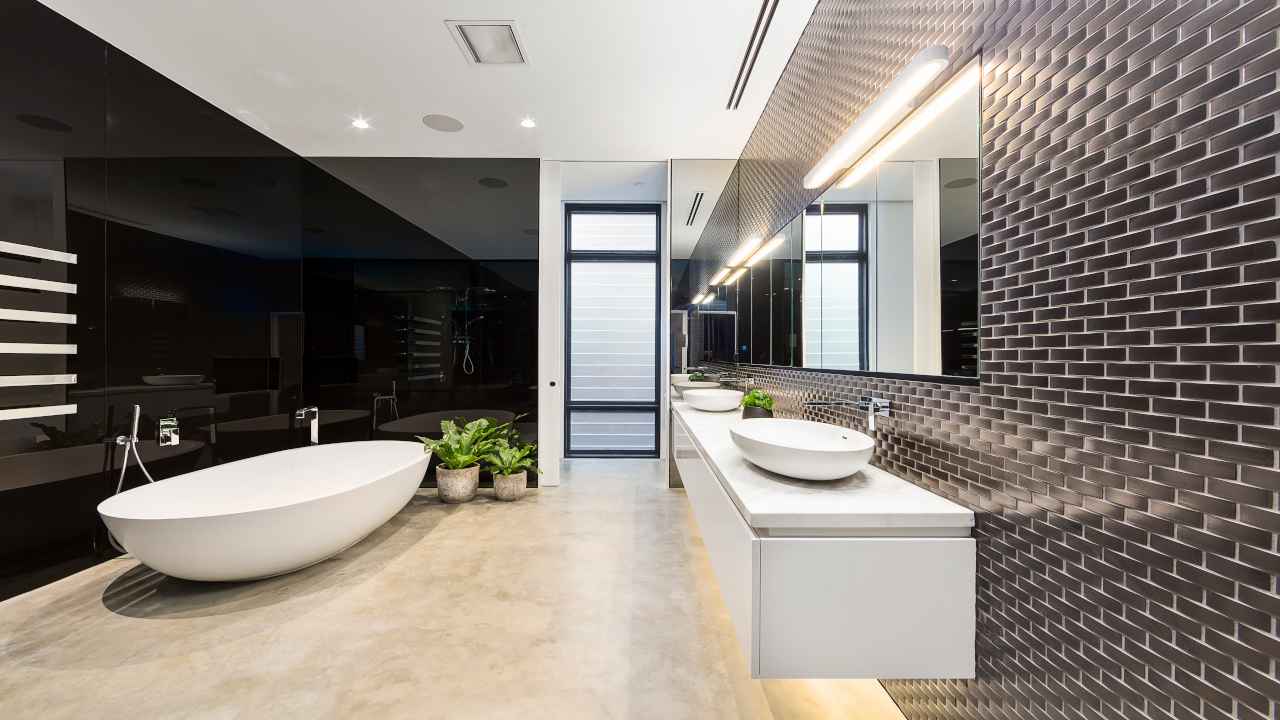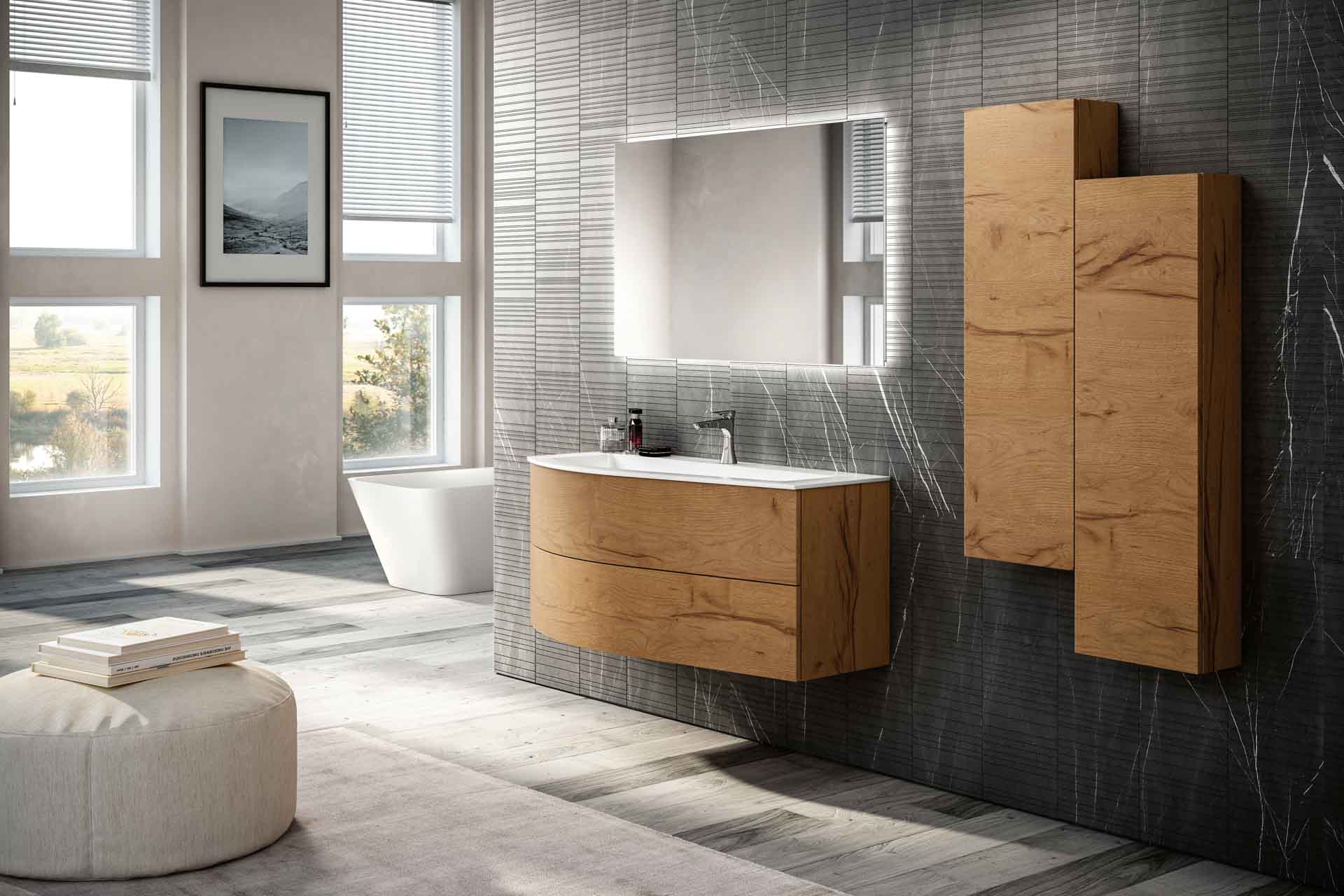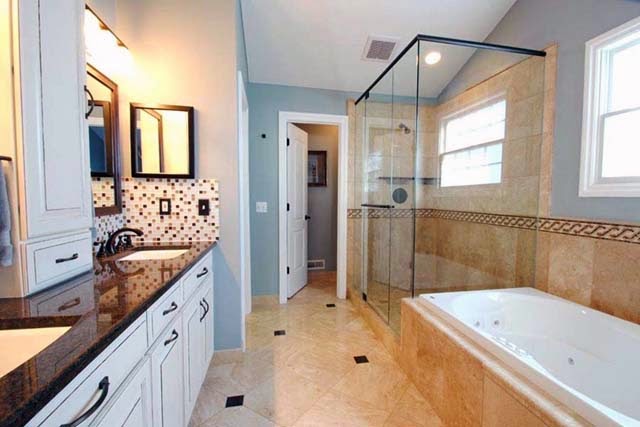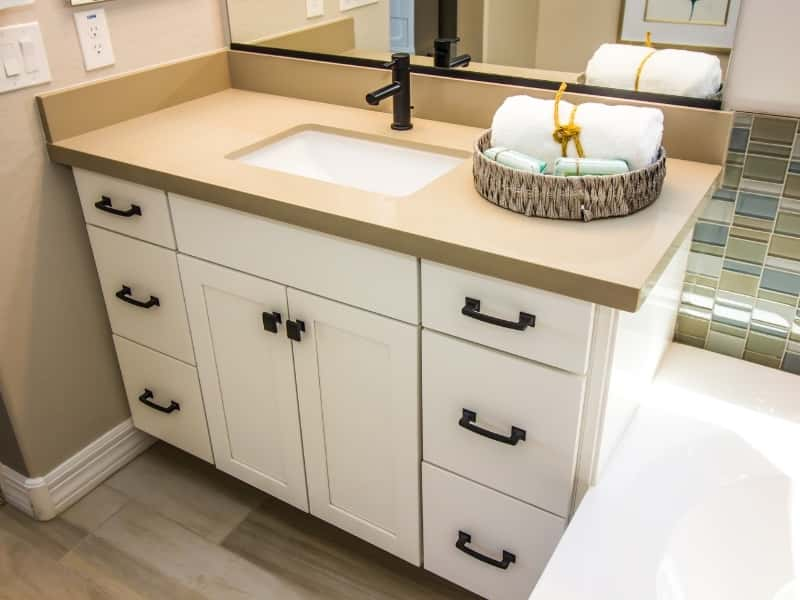Installing a floating bathroom vanity is a great way to add style and functionality to your bathroom. It not only creates the illusion of more space, but it also allows for easy cleaning underneath. However, the installation process may seem daunting for some, which is why we have put together this guide to help you through it. Follow these steps for a successful floating bathroom vanity installation. Floating Bathroom Vanity Installation
The first step to installing a floating bathroom vanity is to measure the space where you want it to be installed. Make sure to account for any pipes or outlets that may be in the way. Next, locate the studs in your wall using a stud finder. The vanity needs to be anchored to the studs for proper support. Once you have the measurements and studs marked, it's time to assemble the vanity. Start by attaching the brackets to the back of the vanity using the provided screws. Then, attach the mounting rail to the wall using the proper anchors based on your wall type. Make sure the rail is level before securing it in place. How to Install a Floating Bathroom Vanity
Now it's time to hang the vanity. Carefully lift the vanity and place it onto the mounting rail. Check for levelness and adjust if needed. Once in place, secure the vanity to the brackets using the provided screws. If the vanity has drawers, make sure they are aligned and open and close smoothly. Next, attach the sink to the vanity according to the manufacturer's instructions. This may involve using a silicone adhesive or clips to secure the sink in place. Once the sink is attached, connect the plumbing and turn on the water to test for any leaks. DIY Floating Bathroom Vanity Installation
Now it's time to add the finishing touches. If your vanity came with a backsplash, install it using a silicone adhesive. This will prevent water from seeping behind the vanity and causing damage. If you have a mirror or medicine cabinet, install them now using the proper hardware. Lastly, add any additional hardware or accessories, such as towel bars or shelves. These can be attached directly to the vanity or mounted to the wall next to it. Once everything is installed, give the vanity a final wipe down and step back to admire your newly installed floating bathroom vanity. Step-by-Step Floating Bathroom Vanity Installation
Here are a few tips to keep in mind during the installation process: 1. Choose the right size: Make sure to measure your space carefully and choose a vanity that fits comfortably without being too small or too big. 2. Use proper anchors: The weight of a floating vanity can put a lot of stress on your wall, so make sure to use the proper anchors to prevent it from falling. 3. Don't overtighten screws: When securing the vanity to the mounting rail, be careful not to overtighten the screws as this can cause damage to the vanity or wall. 4. Consider hiring a professional: If you don't feel comfortable with the installation process, it's always a good idea to hire a professional to ensure it is done correctly. Tips for Installing a Floating Bathroom Vanity
If you're still unsure about how to install a floating bathroom vanity, you can always refer to the manufacturer's installation guide. This will provide you with detailed instructions specific to your vanity model. It is important to follow these instructions carefully to ensure the vanity is installed correctly and safely. Floating Bathroom Vanity Installation Guide
While installing a floating bathroom vanity may seem straightforward, there are a few common mistakes that can occur. These include: 1. Not measuring properly: Skipping the measuring step or not accounting for pipes or outlets can result in a vanity that doesn't fit or is installed in the wrong spot. 2. Not using the right anchors: Using the wrong type of anchors or not using anchors at all can cause the vanity to fall or become unstable. 3. Improperly securing the vanity: Not securing the vanity to the studs or using the wrong size screws can result in a vanity that is not sturdy and could potentially fall. 4. Forgetting to turn off the water: Before connecting the plumbing, make sure to turn off the water to avoid any water damage or leaks. Common Mistakes in Floating Bathroom Vanity Installation
To successfully install a floating bathroom vanity, you will need the following tools: - Measuring tape - Stud finder - Level - Screwdriver - Drill - Screws and anchors - Silicone adhesive Tools Needed for Floating Bathroom Vanity Installation
The cost of installing a floating bathroom vanity can vary depending on the size and complexity of the vanity, as well as the region and labor costs. On average, the cost can range from $300 to $800 for a basic installation. It is always a good idea to get quotes from multiple professionals to ensure you are getting a fair price. Cost of Floating Bathroom Vanity Installation
Before deciding to install a floating bathroom vanity, it's important to consider the pros and cons: Pros: - Creates the illusion of more space - Easy to clean underneath - Modern and sleek design Cons: - Can be more expensive than traditional vanities - Limited storage space - Requires proper installation to ensure stability Pros and Cons of Floating Bathroom Vanity Installation
Why Choose a Floating Bathroom Vanity for Your House Design?

Elevate Your Bathroom Aesthetic

Floating bathroom vanities have become increasingly popular in recent years for their sleek and modern design. Unlike traditional vanities that sit on the floor, floating vanities are mounted directly onto the wall, giving the illusion that they are floating in midair. This unique design element can instantly elevate the aesthetic of any bathroom, making it a popular choice for house design.
Maximize Space and Storage

One of the main benefits of a floating bathroom vanity is its ability to maximize space in a small bathroom. By being mounted on the wall, it creates the illusion of more floor space, making the bathroom appear larger and more open. This is especially beneficial for smaller bathrooms in apartments or condos, where every inch of space counts. Furthermore, floating vanities often come with built-in storage options, such as drawers or shelves, providing ample space to store toiletries and keep the bathroom clutter-free.
Customizable Options

Another advantage of floating bathroom vanities is the wide range of customizable options available. From size and shape to material and color, there are endless possibilities to fit your specific house design vision. Whether you prefer a minimalist white vanity or a bold statement piece in a vibrant color, there is a floating vanity that can cater to your unique style and taste.
Easy Installation

Installing a floating bathroom vanity is a relatively straightforward process, making it a practical choice for house design . Unlike traditional vanities that require drilling into the floor, floating vanities only need to be anchored onto the wall, making it a quick and hassle-free installation process. This also allows for easy removal and replacement in the future, giving you the flexibility to change up your bathroom design without major renovations.
In conclusion, a floating bathroom vanity is a stylish and functional addition to any bathroom in your house design. Its modern design, space-saving capabilities, customizable options, and easy installation make it a top choice for homeowners looking to upgrade their bathroom aesthetic. So why settle for a traditional vanity when you can elevate your bathroom design with a floating vanity?



